RBgrading

click on image to go to the website
RBgrading - the simple way to slab a note.
TPG (Third Party Grading) is a difficult subject since grading a note will most likely not be 100% objective for either side of the transaction. A seller will often try and grade a bank note to be the best grade possible and sometimes a VF becomes a XF- so that it can be sold at a higher price. The buyer will see flaws and problems with the note so that the XF becomes a VF, hence paying less. Finding a common grade is not alwas easy. In addition, many TPGs use a numbering system so that you can get VF20, VF25 or UNC63, UNC64, or UNC66 EPQ/PPQ - for the naked eye, the difference is not discernable, but for the final price of the note it makes a huge difference.
We have been looking at the TPG gradings for quite a while now and have decided to start grading notes ourselves, using a simple system of 10 grades - no additional numbers - just simple grades from Good to UNC ! We think that is enough since we would like to grade the note so that sellers and buyers can reach a quick understanding - our goal is not to drive the price of a slabbed note up 3 fold..... just because it is slabbed.
We have a lot of collaborators, with hundreds of years of collecting experience between them, who can determine exactly which note you want us to grade and slab - our margin of error will be extreemly low. We have access to varies galeries of bank note scans where each Pick Number, Friedberg Number or Rosenberg Number is known.
We have based our grading on a star system from 5-Star ![]() over half-Star
over half-Star ![]() down to no-Star
down to no-Star ![]() which corresponds to the different grades UNC down to Good. Below you will find a conversion table from the RBgrading star system to Englisch grading, German grading and French grading scales.
which corresponds to the different grades UNC down to Good. Below you will find a conversion table from the RBgrading star system to Englisch grading, German grading and French grading scales.
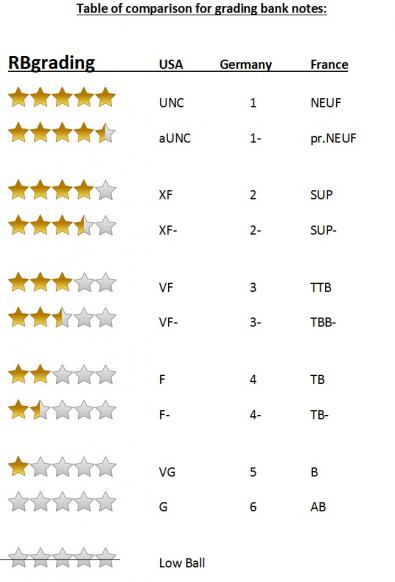
Our front label will include the grade, the Pick number for world currency, the Friedberg Number for US currency and the Rosenberg number for German currency. In addition you will find the denomination, the date (if specified), the signature(s) and the watermark, as well as the country of issue.

Our back label will include the serial number(s) and a unique database entry number by which a note can be identified any time in the future. The unique database entry number eg. 2016-10-0199-CB is comprised of the year, month, number and the initials of the grader. This will allow, in the unlikely event of a grading error, to know exactly who graded that particular note.
We have also decided to use the olympic colors at the top of each label to identify immediately from which continent the banknote is from:
blue = Europe; red = Amerikas; yellow = Asia; black = Africa; and green = Australia/Oceania
Here are some examples of our graded and slabbed banknotes from Mauritius and Italy:
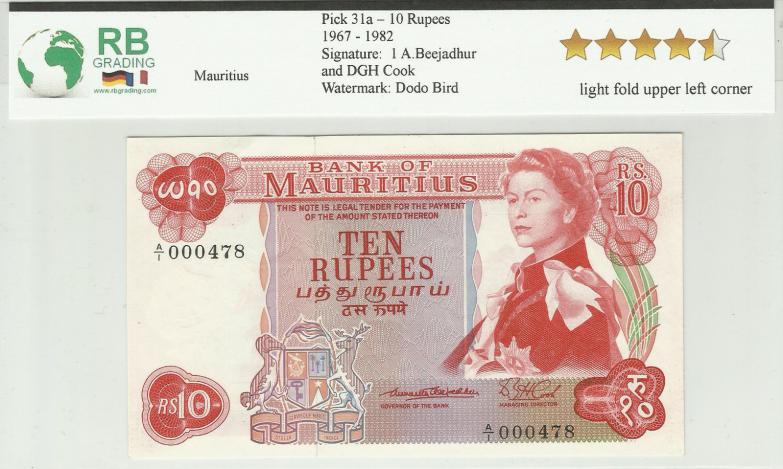
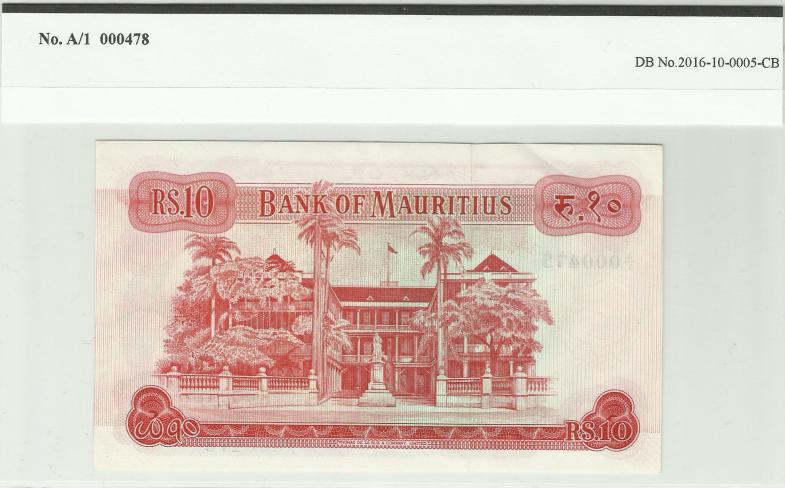
Mauritius Pick 31a with 4 1/2 stars (aUNC) grade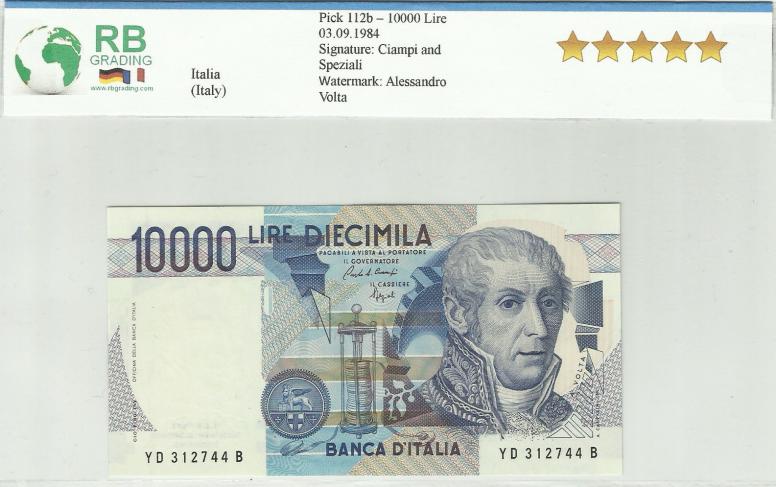
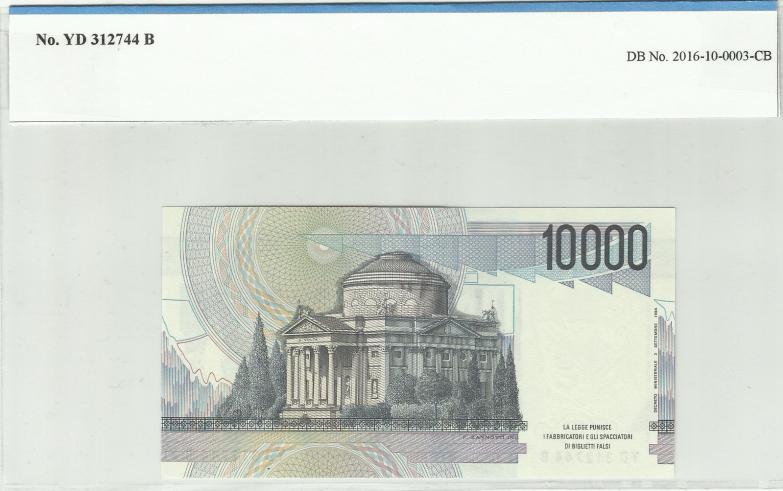
Italy Pick 112b with 5 stars (UNC) grade
|
|
|
|
|
||
|
|
|
|
|
|
|
|
|
Italia (Italy) |
Pick 112b – 10000 Lire 03.09.1984 Signature: Ciampi and Speziali Watermark: Alessandro Volta |
|
|
|

